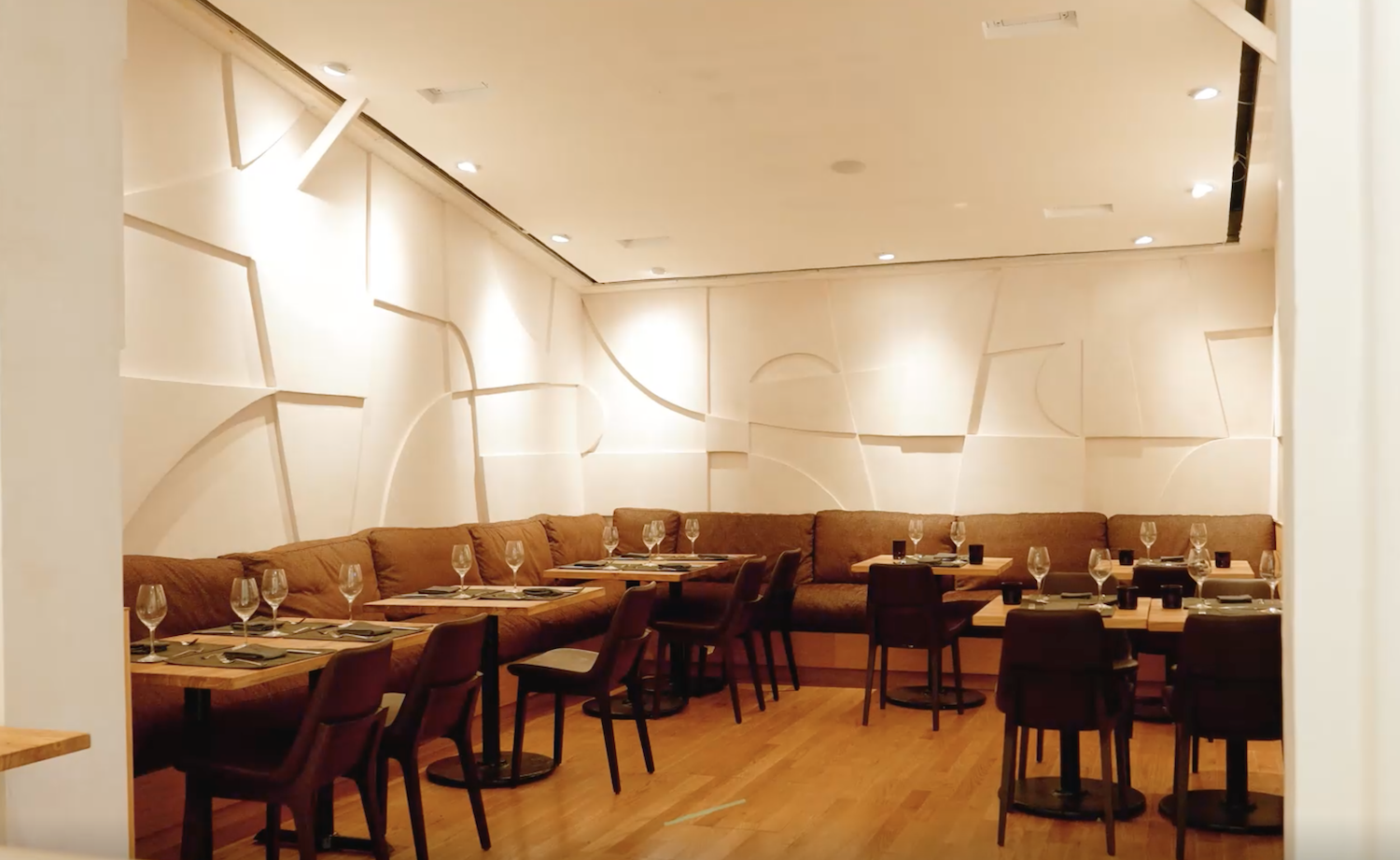Lifestyle
Why brutalist buildings should stay, even if people think they're ugly

The J. Edgar Hoover Building of the Federal Bureau of Investigation (FBI) is seen on April 03, 2019 in Washington, D.C.
Eric Baradat/Getty Images
hide caption
toggle caption
Eric Baradat/Getty Images
If you’ve seen a large building made entirely out of concrete built sometime between the 1950s and 1970s, you’ve probably seen the style of architecture known as brutalism.
People have a lot of feelings about these buildings. NPR interviewed people on the street in front of FBI headquarters in Washington D.C. Built in 1975, it’s a well-known example of brutalism that takes up two city blocks — and that a lot of people dislike.
“I can’t stand it,” said Arielle Carani, a 24-year-old from Chicago. “I work right across the street from it, so I have to look at it every day that I’m in the office. And it’s just so ugly.”
Darren Williams, a 29-year-old from Michigan said, “It kinda looks like a prison with windows. Just a concrete slab stuck in the middle of a city.” And Devon Akmon, a 48-year-old from Ann Arbor Michigan said it looks like “a mass of stone and glass without much architectural detail.”
Nobody we interviewed in front of FBI Headquarters had positive things to say about the brutalist style of the building.
“I think that folks can feel like these buildings are out of scale, and they’re maybe not as beautiful as other types of federal architecture,” said Angela Person, co-curator of a brutalism exhibit at the National Building Museum in D.C. “They just don’t look the same as many other architectural styles that we’ve become accustomed to encountering.”
So what is brutalism and why do people dislike it?
Brutalism started in the 1950s in the U.K. One of its pioneers was Le Corbusier, a Swiss-French architect who did a lot of work in raw concrete after World War II, including housing, religious buildings, and government buildings. He called this style béton brut, meaning raw concrete.

Portrait of Swiss-born French architect and designer Le Corbusier (born Charles-Edouard Jeanneret, 1887 – 1965), New York, New York, 1930s.
Barbara Morgan/ UCLA Library/Getty Images
hide caption
toggle caption
Barbara Morgan/ UCLA Library/Getty Images
“He was referring to the concrete material as being raw and not something you could totally control the precision of. And he just embraced that. He was such a leading figure that I think other people followed in his footsteps,” said Jeanne Gang, founder of Studio Gang, an architecture firm based in Chicago, New York, San Francisco and Paris.
Person says brutalism is a style of modernism, a movement that appealed to architects and designers because of its material honesty and lack of ornamentation. They felt they were creating beautiful, sculptural buildings that would stand the test of time
She says you can look at brutalist buildings and understand how they are laid out. The materials are presented how they are: There is no plastering, or unnecessary paint or finishes.

Habitat 67, a prefabricated housing structure designed by Israel-born Canadian architect Moshe Safdie for Expo 67. It’s made up of a basic structural unit of precast concrete, 38 1/2 feet long, 17 1/2 feet wide and 10 feet high, which is finished off with a kitchen, bathroom, fixtures and other living features.
Bettmann/Bettmann Archive/Getty Images
hide caption
toggle caption
Bettmann/Bettmann Archive/Getty Images

The University Of California, San Diego, Geisel Library, located in La Jolla, California.
Education Images/Universal Images Group/Getty Images
hide caption
toggle caption
Education Images/Universal Images Group/Getty Images
There was a building boom after World War II, and many places, such as the U.K. needed to completely rebuild. Person says brutalism became popular for a lot of large, institutional buildings — like big government buildings, campus buildings, and public housing. The brutalist style lent itself to rapid construction and was relatively affordable. Plus, concrete was and remains largely available around the world.
“It was the style of the moment in the postwar period. I think it was a popular style in that time because there was this need to really rapidly scale up the amount of office space for the federal government,” said Person.

Boston City Hall, built in the Brutalist architectural style, is seen in Boston on Friday, August 13, 2021.
Ted Shaffrey/AP
hide caption
toggle caption
Ted Shaffrey/AP

The Robert C. Weaver Federal Building, headquarters of HUD, the U.S. Department of Housing and Urban Development in Washington, D.C.
Carol M. Highsmith/Buyenlarge/Getty Images
hide caption
toggle caption
Carol M. Highsmith/Buyenlarge/Getty Images

The Department Of Health and Human Services’ Hubert H. Humphrey Building in Washington. D.C.
Raymond Boyd/Getty Images
hide caption
toggle caption
Raymond Boyd/Getty Images
Brutalism got a bad rep in the press and sometimes for political reasons too, said Gang. That’s because these buildings often represented socially ambitious programs that then went into disfavor. Many brutalist buildings got torn down.
Person says she thinks some of these buildings are in disrepair because it’s been difficult to fund their upkeep and update them.
“If they’re not well-loved, it can be difficult to prioritize finding the funding and maintaining them,” said Person.
Why keeping them around is the green, sustainable move
These buildings were meant to stand the test of time, Person says. But they’re in need of significant investment if they are going to exist for another five decades.
Gang says there is an environmental incentive not to demolish brutalist buildings. The process of curing cement into concrete causes a lot of carbon emissions. Generally, people are now trying to use more environmentally friendly building materials.
But the brutalist buildings have already been built, and the carbon has already been released into the atmosphere.
“So preserving them would really be saving carbon…little nuggets of carbon that you would be saving and reusing,” said Gang. “It’s the most environmentally friendly thing you can do to reuse a building like that.”
Brutalist buildings, though, can be more difficult to maintain. Person says sometimes if the plumbing or electrical must be updated, workers have to run wires or piping outside the walls so they are visible.
Gang has renovated brutalist buildings and says there are a lot of challenges with their preservation. They need to be adapted to accessibility standards, they have outdated mechanical systems, and some building features may be difficult to repurpose.
“If you tear them down, it’s so wasteful that it’s really criminal in a way. It’s like, you could be building on these interesting buildings and make them work for today,” said Gang. “Most people would just say this is not a good building. Let’s tear it down. It’s my impression they would be lost to the wrecking ball if people don’t start to kind of wake up and see the qualities there.”
Obed Manuel and Suzanne Nuyen edited the digital version of the story.

Lifestyle
The hootin'-hollerin' allure of Knott's Berry Farm's summer staple Ghost Town Alive!
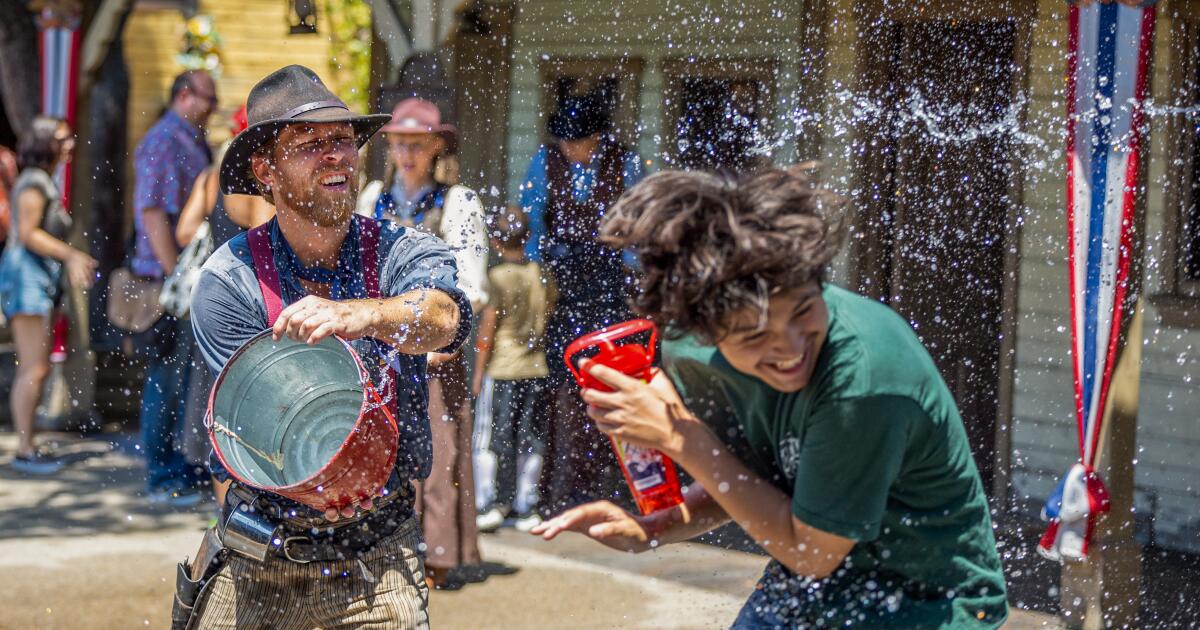
“Have you ever pickpocketed?”
No, I have not. At Knott’s Berry Farm, it was suggested I give it a try.
Thieving, the man gushed, is freeing, and, by it’s very nature, comes with a reward — or spoils. But I was in the presence of an unreliable narrator, for I was leading “Honest” Cody Sullivan to theme park prison, that is, a single cell in the middle of the Knott’s historic old West-themed Ghost Town. Sullivan’s recent crime? Stealing a judge’s gavel.
I have never worked for a sheriff’s department, either, but at Knott’s annual summertime offering Ghost Town Alive! one can roleplay just about whoever they want. As long as it’s silly.
On a recent visit, I started my day as a mail courier, which led to me meeting an elixir specialist, where we wondered about a cure to “duck pox,” but before any fictional diseases were tackled I was conspiring with a local hotelier, imagining ways to conceal a mice problem. This transpired in less than an hour, as narratives in Ghost Town Alive! come quick and spiral into lunacy. You may encounter someone who is quacking — the aforementioned duck pox — or be pulled aside and handed a sack of play money, a stolen good one Ghost Town “resident” was hoping could be used to win the affections of another.
Come ready to contribute. But if you don’t, participation will find you. I was standing idly when approached to arrest Sullivan, portrayed by actor Josh Williams.
In the Ghost Town Alive! experience, Josh Williams, left, performs as “Honest” Cody Sullivan and Evan Battle plays Deputy Chester Davenport.
There is nothing at any theme park quite like Ghost Town Alive! Part live action role-playing game and part work of improvisational theater, Ghost Town Alive! brings with it daily storylines, including multiple editions of a newspaper, and a cadre of wacky characters. A Knott’s staple since 2016 — Ghost Town Alive! has its roots and influences in Disneyland’s beloved but fleeting Legends of Frontierland — the experience has matured into one of the most unique and creative theme park offerings in Southern California.
The key to its long-term success? Ghost Town Alive! understands the heart and soul of what makes a great theme park experience: It’s the people, and our ability to connect and play with them.
“People’s lives are deeply impacted by the work that we do here,” says actor Rachel Roman, who plays postmaster Shelly Melson. Before Roman broke character to chat, her Melson had been gossiping about her coworker, Buttons, noting the latter had been littering. Apparently Buttons had been dropping, well, buttons, throughout the fictional town of Calico.
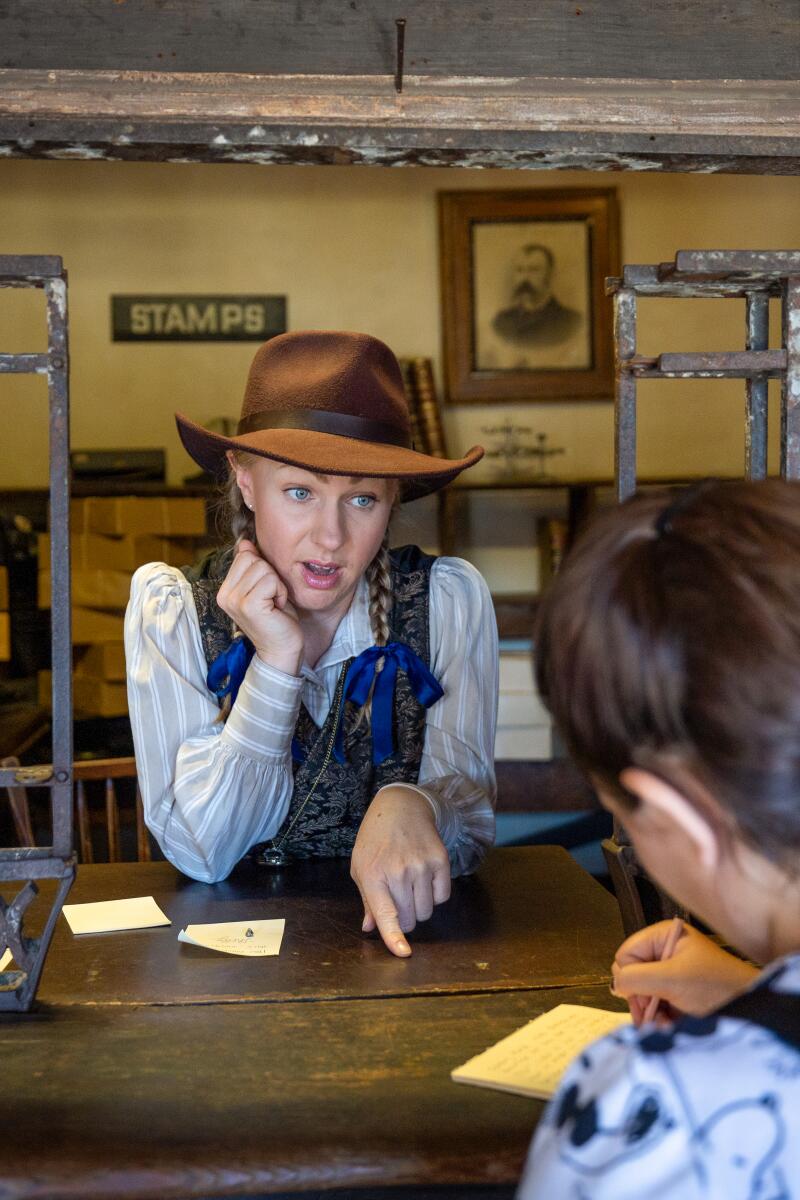
Annabelle Pancake, 11, right, of Anaheim, plays a Calico Gazette reporter interviewing a postal worker, played by Rachel Roman.

A participant holds the Calico Gazette daily newspaper.
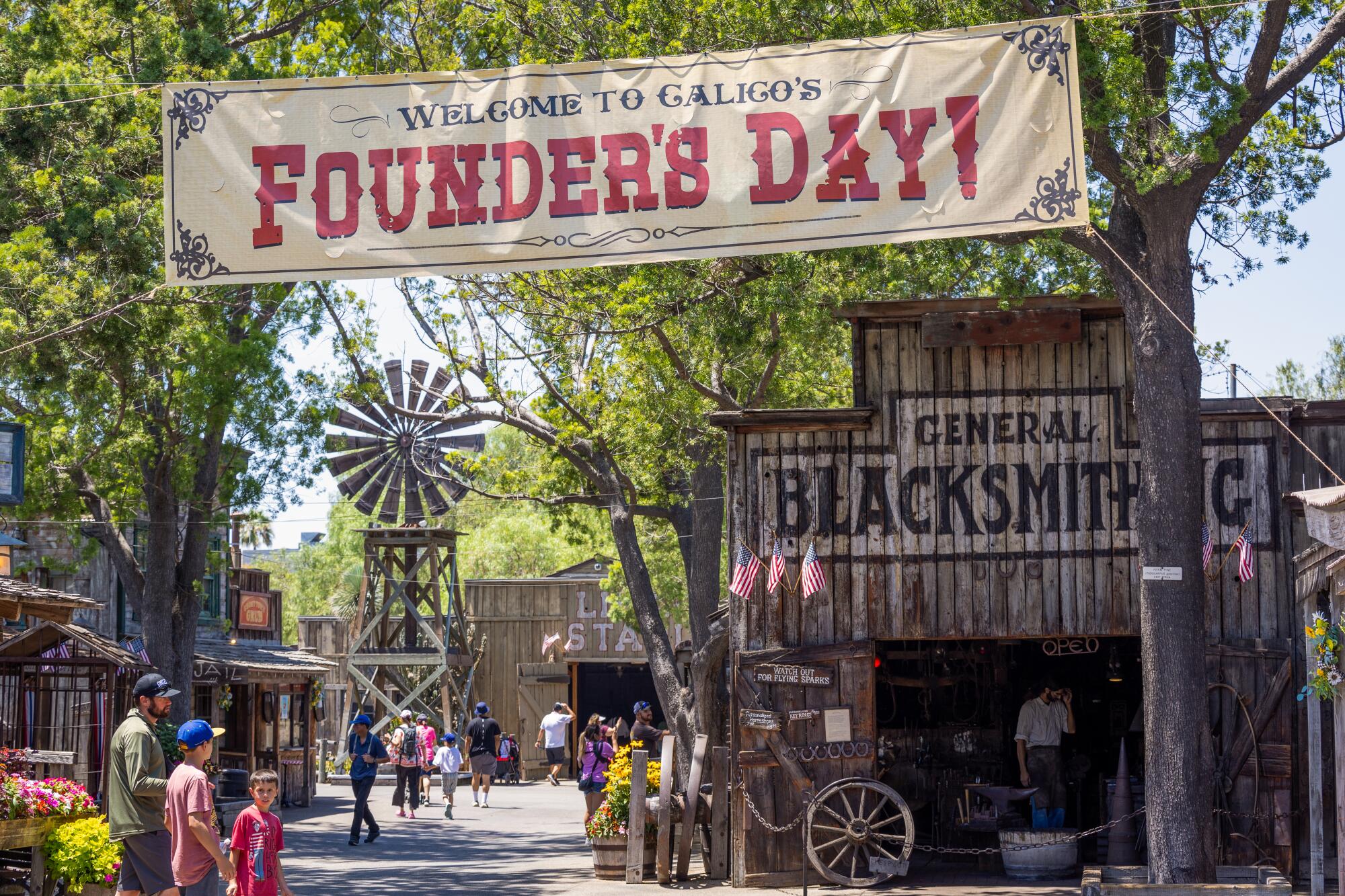
A sign welcomes visitors to Calico’s Founder’s Day.
“There’s a range of guests, and ones that you will cherish, like this little kid who comes in,” Roman says. “She’s my little best friend. We each get our own little besties. Her parents just go on about how she won’t stop talking about Shelly. She’s so sweet and fun to play with. I was on the other side of this as a kid. I grew up going to theme parks with my dad and was that passholder kid who all the performers knew.”
Ghost Town Alive! treats the theme park as a stage, allowing guests to become actors. It’s a nod to the roots of Knott’s, when the park lacked thrill rides and specialized in Wild West stagecraft. A song-and-dance-style revue runs concurrently with Ghost Town Alive!, all of it lending Calico a lived-in, heavily populated feel. Rovin Jay, show director, says the park employs 45 actors for the performances.
This summer, I got my name printed in the Calico Gazette, learned about misguided experiments that inspired theme park trickery — one involved electricity, a potato and resulted in a late afternoon explosion — and was a jury member in the case of a stolen 100 pound catfish. I was sworn in as a resident of Calico, took a journalistic oath for the town’s newspaper — I promised to tell the truth, except “when gossip will do” — and earned my first Calico wooden coin. “You can’t spend it on much, but it’s priceless in sentimental value,” I was told.
Another day I walked into Ghost Town and was asked, almost immediately, if I wanted a bucket of water dumped on me (I did not). I also took part in a plot to use melted cheese to free a prisoner. It made sense in the moment. Theories in Ghost Town Alive! need not be plausible. This is a space where imagination is not just off the leash, but untamed.
“It’s the thing we used to do when we were 6 or 7 and in the playground,” Jay says. “Friends come up and you just create. We’re able to do that here on a daily basis.”
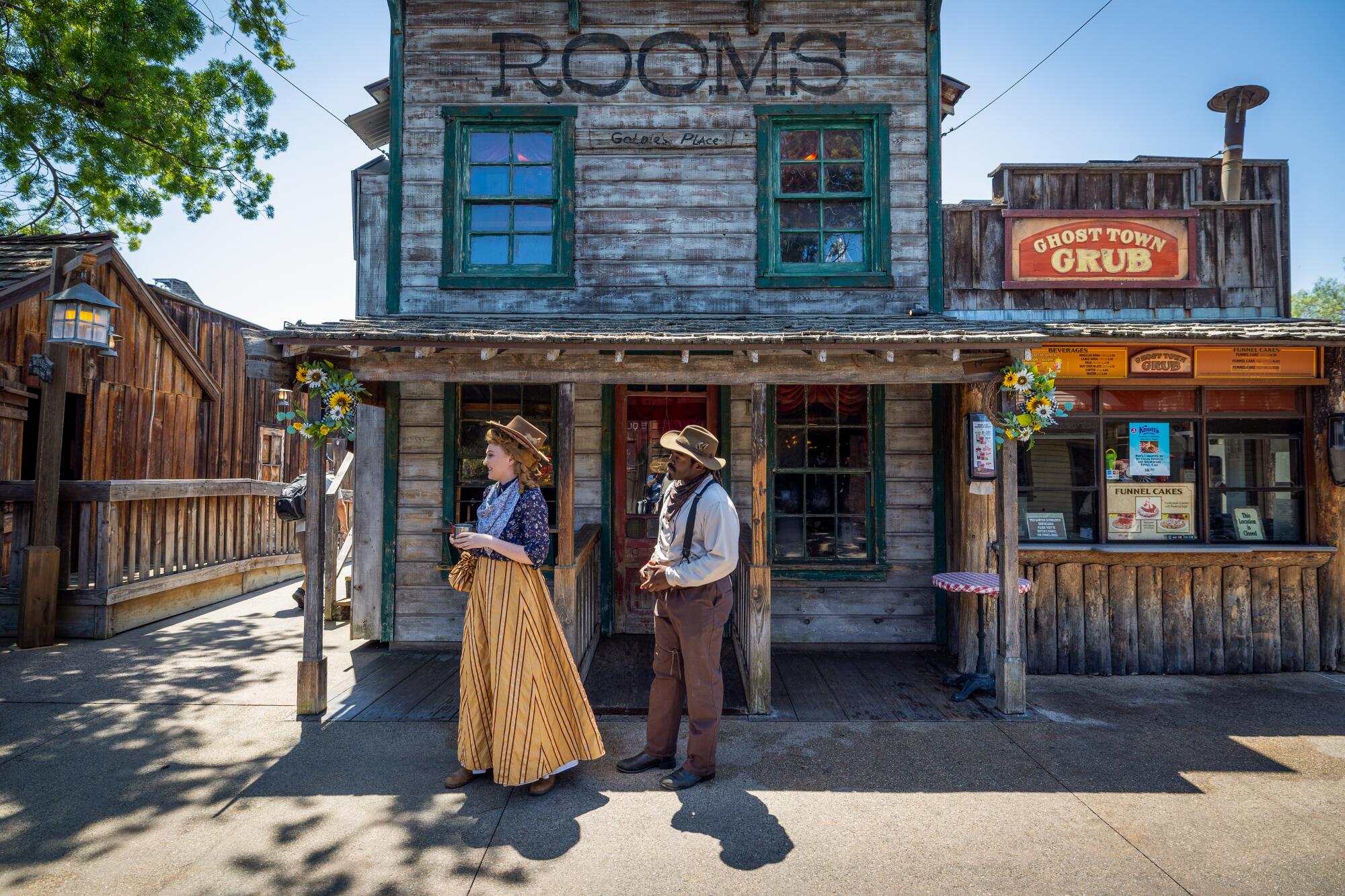
Rachel Hanson, left, performs as Thelma Kinkade and Josh Williams performs as “Honest” Cody Sullivan in front of Goldie’s Hotel.
Some of these events happen everyday, but each afternoon — Ghost Town Alive! runs on select days through Sept. 2 from 10 a.m. to 4:30 p.m. — is also full of off-the-cuff narratives. Perhaps you’ll be asked to act in a moving-picture show, participate in a mustache contest, take a drawing class, help a gang rob a bank or inspire a bashful Calico resident to ask a lady to the afternoon hoedown. Guests, Roman says, “get very invested in our love lives.”
To describe the appeal of the show, Jay asks me to visualize a stereotypical theme park advertisement — say of a known character holding the hand of a young child.
“It’s a promise that you are going to have an unique and personal interaction with a character,” Jay says. “We’re able to deliver that, and we’re able to deliver that organically. It’s so funny to me how often we’ll have guests come in and say, ‘When is the show going to start?’ Meanwhile, the bank is getting robbed. These are characters you learn to exist with. You’re seen automatically. The moment you step into Ghost Town Alive!, it’s, ‘Hi! It’s nice to see you.’”
To make a theme park feel personal is no easy feat. In fact, designers have long been trying to solve this problem, be it creating interactive attractions that feel responsive to the guest, or short-lived experiments such as the Star Wars: Galactic Starcruiser, colloquially known as the Star Wars hotel.
The antecedent to Ghost Town Alive!, Disney’s Legends of Frontierland (both shared some of the same creative team), lasted a few months. And prior to the opening of Star Wars: Galaxy’s Edge at Disneyland in 2019, Disney creatives talked heavily of a land filled with actors and live shows, a reality that has never fully materialized.
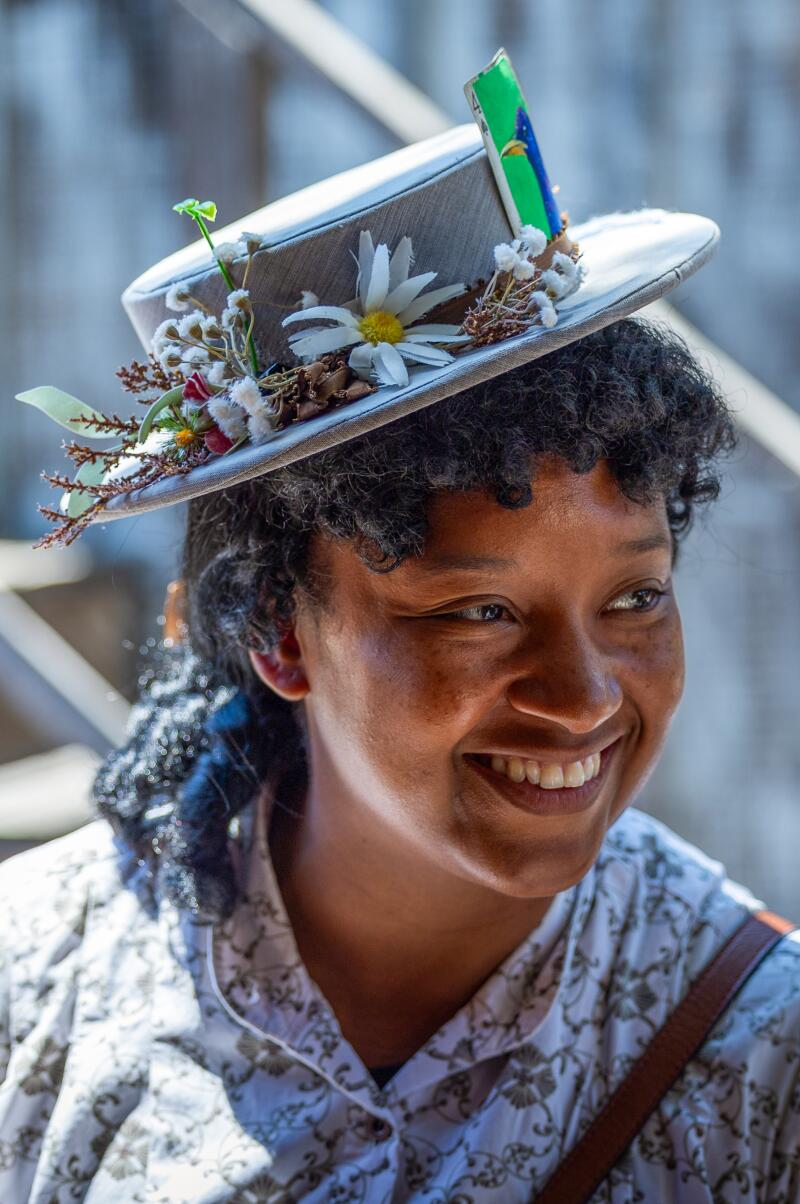


Justyn High performs as Marybelle Starling. John Guirguis performs as Jackknife Blacksmith. Visitors talk to Evan Battle, center, who plays Deputy Chester Davenport.
“I’ve gone through Galaxy’s Edge several times, and have often wondered what it would take to people that town,” Jay says. “It would be five or 10 times as many people on the roster. Daily, you’d have to have a couple hundred people just to make it feel alive and organic. There’s so many nooks and crannies there. We just have a couple streets that were part of our original design. The scalability is a challenge.”
And to guests, it’s an investment that’s worth it.
Janey Ellis, 36, of Anaheim, is a Ghost Town Alive! regular. Ellis recently made the Calico Gazette with a tale of a fence that sprouted legs and walked off its property. Ellis comes to Knott’s to experience that sort of “B-plot chaos.” “I’m here to see what you can create out of nothing,” she says.
“I think this is the future of theme park entertainment,” Ellis says. “This is so unique and personal. You’re able to drive something for hours on end. This is a real-life video game, or a real-life [‘Dungeons & Dragons’] game.”
And a reminder that one not need the latest technology. Sometimes a playground, a bit of imagination and the joy of performance will do. Just be careful who you pickpocket.
Lifestyle
A 3rd person has died in connection to the listeria outbreak in Boar's Head products

This image provided by the U.S. Department of Agriculture in July 2024 shows a label for Boar’s Head liverwurst. The company recalled 7 million pounds of deli meats on July 30, 2024, expanding an initial recall on July 25 after a liverwurst sample collected in Maryland tested positive for listeria.
USDA/AP
hide caption
toggle caption
USDA/AP
There has been a third death connected to the listeria outbreak among Boar’s Head deli meats, the CDC said Thursday.
A person most recently died in Virginia, adding to the two previous deaths reported in New Jersey and Illinois.
In addition, 43 people have been hospitalized across 13 states, including Missouri, Minnesota, Illinois, Wisconsin, Indiana, Georgia, North Carolina, Virginia, Maryland, Pennsylvania, New Jersey, New York and Massachusetts.
Boar’s Head first issued a recall in late July, which it has since expanded to include all of its deli meat products, including its prepackaged selection.

“The true number of sick people in this outbreak is likely higher than the number reported, and the outbreak may not be limited to the states with known illnesses,” the CDC said. “This is because some people recover without medical care and are not tested for Listeria.”
Those who have purchased the brand’s items should throw them out or inquire about a return at the store where it was bought. Additionally, clean any surfaces that came into contact with the meat, such as refrigerators and containers.

Some symptoms of listeria contamination may include fever, muscle aches, a stiff neck, convulsions and confusion, and could be more severe in people who are pregnant, over the age of 65 or have weakened immune systems. Symptoms may take one to four weeks to show up, or as many as 70 days. If you start showing symptoms, call a healthcare provider.
The median age of those infected so far is 77.
Lifestyle
Hulk Hogan's Ex-Friend Is Willing to Work With Ben Affleck, Matt Damon on Gawker Film

Hulk Hogan‘s former close friend is not shying away from the upcoming Gawker movie … instead he wants to collab with them … and, he’s got lots of insight ’cause he was at the center of the scandal!
A rep for Bubba the Love Sponge — a famous radio DJ whose wife wrestled between the sheets with the Hulkster in the now-infamous sex tape — tells TMZ … Bubba’s not currently working with Ben Affleck and Matt Damon on their movie, but he’s willing to collaborate.

We’re told he feels the story’s already out there, so Bubba’s not hiding from it … and, he wants to ensure the pair get the facts right in their flick.
One of the biggest facts … the rep says Bubba wants BA and MD to make it clear the sex tape was stolen and he didn’t leak it.
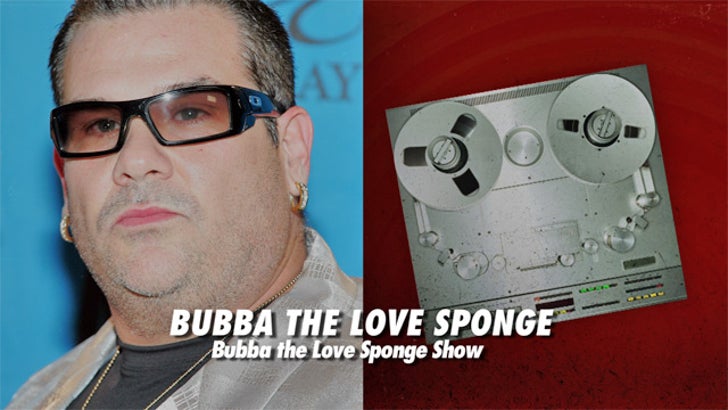
If you don’t know … Bubba was married to Heather Clem — the one who appears in the sex tape alongside Hogan. We broke the story years ago that Bubba and Heather had some arrangement in place where Heather could have sex with other men so long as she recorded it.
After the sex tape came out, Hogan sued Bubba and Heather. Ultimately, Bubba settled with Hulk outside of court for just $5,000 and an on-air apology.

Bubba might be cool with Matt and Ben, so long as they get the facts right, but we know Hulk won’t be working with them … as we told you, he’ll consider legal action if the two creators step over the line.
As for casting … Bubba’s pitching Jonah Hill to play him in the movie — or Matty Matheson of “The Bear” fame if Matt and Ben want someone more low-key.
BTW … although Bubba’s not involved with the biopic, he is working on a 3-part docuseries about the scandal set for release in the fall.
-

 Politics1 week ago
Politics1 week agoWatchdog claims victory over Pentagon animal testing as lawmakers demand accounting of taxpayer funds
-

 World1 week ago
World1 week agoQassam Brigades local commander among 5 killed in Israel attack on Tulkarem
-

 Politics1 week ago
Politics1 week agoGeorgia activist steals the show after being introduced by Trump at Atlanta rally: 'Incredible'
-

 Politics1 week ago
Politics1 week agoBarack Obama's political career kicked off in the Illinois State Senate, evolved into a two-term presidency
-

 World1 week ago
World1 week agoHamas begins consultations to choose Ismail Haniyeh’s successor
-

 Politics1 week ago
Politics1 week agoHarris VP search comes down to the wire, with Dems divided over Shapiro, Walz, Kelly
-

 World6 days ago
World6 days agoVenezuela launches probe against opposition leaders Gonzalez, Machado
-
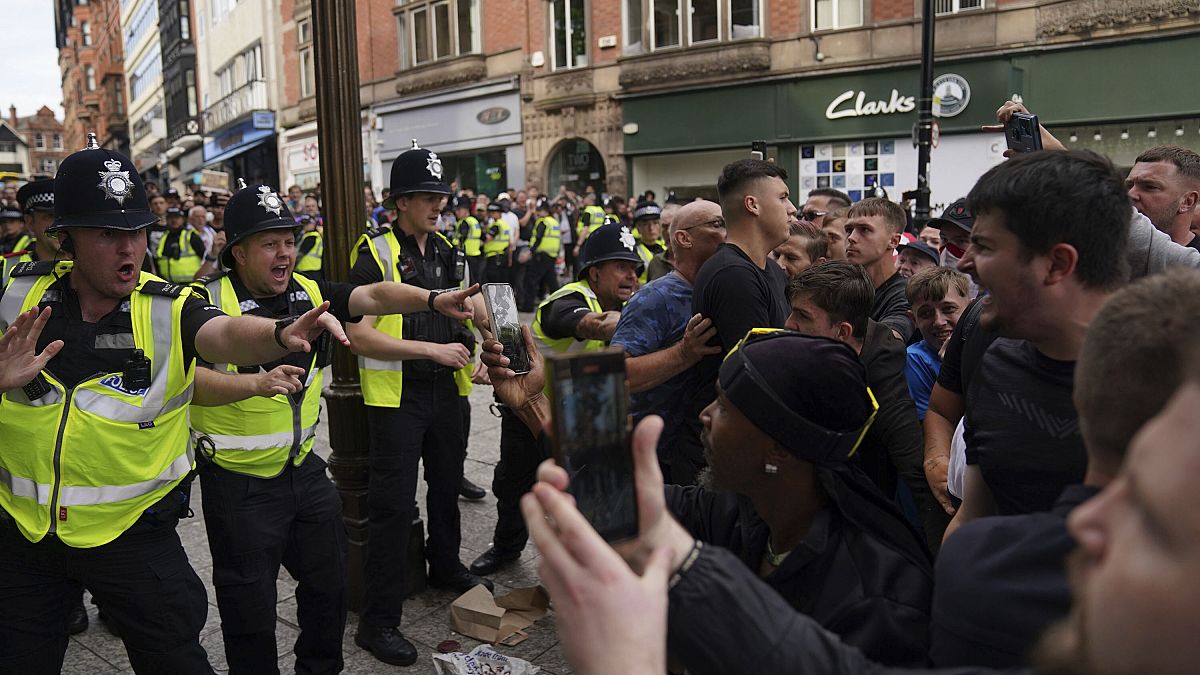
 World1 week ago
World1 week agoSeveral police officers injured in protests across the UK


